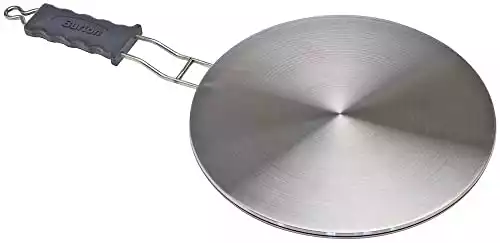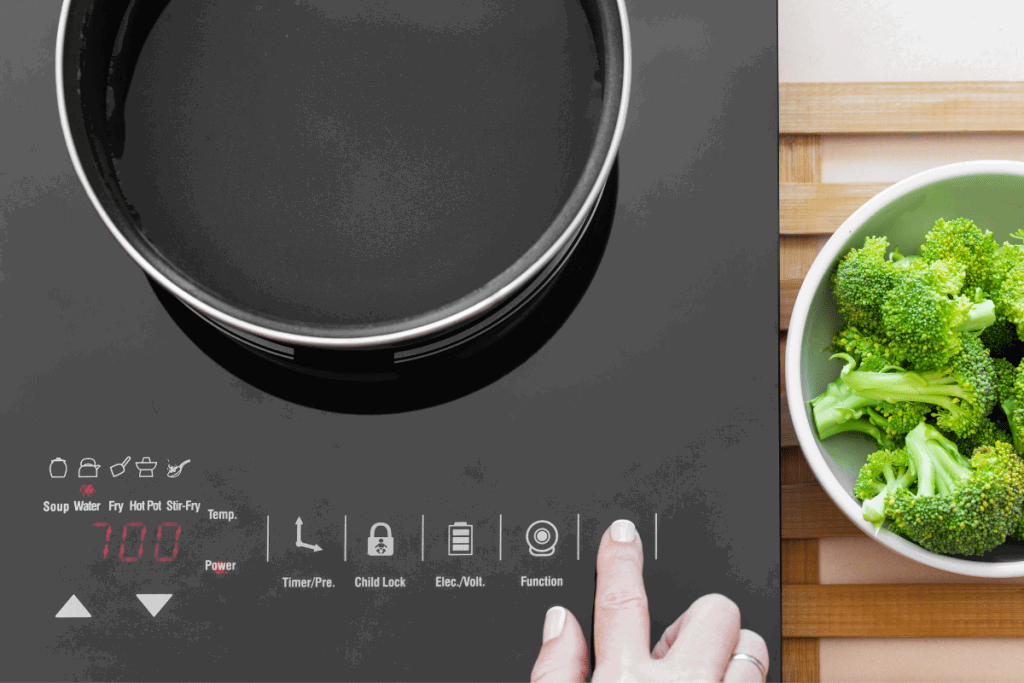Induction cooking is a miracle of science.
Even a small induction stove can be incredibly powerful. They are fast, energy efficient, incredibly safe and easy to clean.
I’ve been cooking on induction cooktops at home and in restaurants since 2012. While I love cooking with fire, induction has become my preferred method for its speed and accuracy.
You’ve probably heard that “special” cookware is required to use an induction stove. If you’re like me and have a well-loved collection of equipment, you may also be wondering – is my cookware induction compatible?
While induction cooktops do require specific cookware materials to function properly, these are likely pieces that you already own. If you don’t, you should consider adding them to your collection with or without an induction cooktop. And if you don’t, it’s ok. You won’t have to break the bank to add them.
In this article I’ll be your guide to what cookware is and isn’t compatible. You’ll find out how to tell if your current set of pots and pans can be used. And if they’re not, if buying a new set is worth the investment.
In This Article
The Science Of How Induction Cooking Works
Inside your induction stove, you’ll find electricity flowing through a copper coil in order to create an electromagnetic field.
This field causes iron molecules in your cookware to vibrate thousands of times per second. The rapid vibration creates friction, which in turn heats the pan from the inside out.
This may sound like science fiction, but induction cooktops are easy to find and have been widely available since the mid 2000s.
What Cookware Works With Induction Cooktops?
Induction cooking relies on the magnetic quality of iron to heat and cook food.
If you’re looking for a good pan for your induction stove, Cast iron is always a safe bet. That goes for the enamel coated varieties as well.
Most stainless steel pots and pans are also compatible, but there are some exceptions. Since stainless steel is an alloy (i.e. – a combination of different metals), the exact makeup and iron content can vary from pan to pan.
In some cases stainless steel cookware has little or no iron content. When this is the case, they will heat poorly or not work at all.
Cookware made from solid aluminum, copper, glass, or ceramic won’t work on an induction stove because it lacks the critical iron content. Some manufactures now add an iron core or base to those non-compatible materials so that they can be used with induction.
How To Test If Your Current Cookware Is Compatible
Place a magnet on the base of any cookware and if it sticks and holds firmly, then it will work on an induction cooktop. Any old refrigerator magnet will due, but if you don’t have any on hand, many houses use magnets to hold kitchen cupboards or medicine cabinets closed. And those will get the job done too.
It’s a simple test but it will tell you if there is enough iron content in the pot or pan to work. If you feel the magnet pull but it wont stick, then there is some iron in the cookware, but you will likely have very poor heating if any at all.
When buying new cookware simply look for the induction symbol on packaging, manuals, or directly on the cookware itself.

What’s A Pan Adapter And Does It Really Work?
If you have cookware that is not induction compatible, there are pan adapters available. These magnetic metal discs are placed between the cooktop surface and the non-compatible cookware. As the adapter heats up, it transfers heat to the pot or pan on top.

I’ve never used an induction adapter myself, but the consensus from most owners is that they work, but are not great for high heat cooking. Cookware heat up time tends to be significantly slower when using an adapter as well.
In some cases, owners experienced that their induction cooktop overheated while using such an adapter. This causes the burners to shut down completely until they cool to a suitable temperature.
These could be a good option for nonstick cookware used for pancakes or scrambled eggs, where high heat is not required. But, they may not get the job done when trying to boil water or sear a steak.
What Are The Benefits And Drawbacks Of Induction Cooking?
One of the biggest benefits when cooking on an induction stove is how fast pots and pans heat up. The speed all comes down to efficiency. Since induction stoves don’t produce any heat themselves, there is very little heat and energy lost.
Think about the warmth you feel from a gas flame or an electric coil. It may feel nice on a cold day, but that’s all heat and energy being lost to the air. The lack of heat production also makes these stovetops safer and less expensive to operate.
There are a couple common drawbacks that you should be aware of. You can’t use all types of cookware, and built in units are often more expensive than their gas or electric counterparts.
Is Induction As Popular As Gas Or Electric?
Induction cooktops have been available to the public since the 1970s, but did not become easily accessible until the mid 2000s. Initial models were only available from the brand Westinghouse and they cost the equivalent of over $8,000 today.
After so many years, induction cooktops are still not nearly as popular as traditional gas and electric models. This could be due to high prices and also a lack of marketing for the products and their useful features.
In 2019 about 15% of all built in stoves in the US were induction cooktops, a fairly small percentage considering the limited number of options. During the same year, Europe was responsible for almost 36% of all induction cooktops sold, leading the way for the entire globe.
With an emphasis on clean energy and efficient appliances, induction cooktops are likely to gain more popularity. Also, with better technology comes lower prices, making induction cooktops accessible to a wider range of budgets.

The Bottom Line On Induction Cookware
Induction cookware isn’t a special line of pots and pans that can only be used on specific stove tops. It turns out that compatible cookware is actually made from some of the best and most useful materials to cook with, period.
As it continues to gain popularity, brands are starting to include induction compatibility across more cookware lines. So, no matter what your budget or your preferred material, I’m certain you can find induction cookware to fit your needs.
If you’re considering making the switch to induction, check out some of the best induction cookware to make the transition easier. And who knows, you may already have some of the best pieces in your cupboard.








